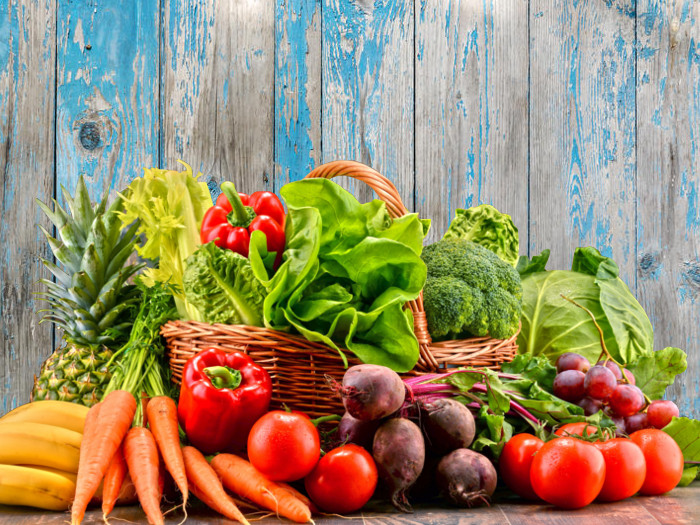Whipple’s disease is a rare, infectious, gastrointestinal disease that occurs due to exposure to the bacteria Trophyrema whipplei. The most effective remedies for Whipple’s disease include the consumption of fruits, vegetables, and a generally high-protein diet.
It is very important to add electrolytes and salts to your body regularly in order to treat or potentially prevent the severity of this disease. You need to avoid greasy or high-fat foods. Also, you need to add significant amounts of iron, folate, calcium, magnesium, and vitamin A, vitamin B12, vitamin D, vitamin E, and vitamin K to counter effects of Whipple’s disease. [1] [2]
Home Remedies for Whipple’s Disease
Let us look at some of the home remedies for Whipple’s disease in detail below:
Iron Intake
Since Whipple’s disease inhibits your body’s ability to absorb nutrients properly, it is essential to supplement it with minerals, like iron. You will be unable to properly digest iron, resulting in anemia and a low red blood cell count, which means you lose energy, suffer from headaches, and general weakness. Therefore, add foods like red meat, eggs, green leafy vegetables, dried fruit, liver, mollusks, lentils, beans, artichokes, and turkey to your diet. [3]

Vegetables, especially leafy green, are good for digestive health. Photo Credit: Shutterstock
Fruits and Vegetables
Fruits and vegetables are often the best sources of compact nutrients, and they also provide fiber, which helps the digestive processes within the body. Since Whipple’s disease affects the gastrointestinal system to such a high degree, any possible boost to digestive function is a good thing. You may not fully absorb the beneficial nutrients in fruits and vegetables, but whatever your body is able to absorb will be beneficial. Furthermore, a lack of fruits and vegetables results in scurvy, which is a common issue associated with Whipple’s disease. [4]
High-protein Diet
Since Whipple’s disease affects various parts of the body and a number of the body’s processes, it is important to replenish the reserves of material to create new cells, muscle mass, blood vessels, etc. Proteins are the building blocks of our body and play an essential part in healing, as well as growth. By increasing the amount of protein we consume while suffering from Whipple’s disease, it is possible to stave off some of the more damaging symptoms and side effects of malabsorption. Some of the best protein-rich foods to eat are turkey, tuna, salmon, cheese, pork loin, tofu, beans, eggs, yogurt, milk, nuts, and seeds. [5]
Avoid High-fat Foods
An unhealthy diet of fatty, greasy foods can make the symptoms of Whipple’s disease even worse, because they contribute to a weaker cardiovascular system, slow down your metabolic processes, and can contribute to many other health concerns that will further weaken your overall system. Therefore, maintaining an all-around healthy diet is the best way to increase your quality of life if you are suffering from Whipple’s disease. [6]
Calcium and Magnesium
Consuming foods that are rich in calcium and magnesium can help improve your gastrointestinal system, along with many other aspects of human health. These are also two of the most important minerals that aren’t able to be absorbed by the body when suffering from Whipple’s disease. Without these two minerals, your bone mineral density will decline, and the weakness already associated with the disease will be exacerbated. Calcium-rich foods include milk, yogurt, cheese, nuts, and various vegetables like broccoli and kale. Magnesium-rich foods include spinach, mackerel, soybeans, rice, avocados, and bananas. [7]
Vitamin Supplements
Whipple’s disease does not allow the body to absorb essential vitamins so it is important to use vitamin supplements to keep your levels healthy and normal. These sorts of vitamins can be found in foods if you specifically pay attention to which vitamins you need, but it is also easy to get vitamin supplements in organic food stores. [8]
Treatments
The most common medical treatments are long-term use of antibiotics such as penicillin, ampicillin, or tetracycline. Medical care must be the primary method of treating this disease since if it is left untreated, it can be fatal. [9]
Word of Caution: As mentioned earlier, it is vitally important that you seek medical consultation if you think you have contracted Whipple’s disease. The antibiotic treatment that you will follow will last for at least a year, but these home remedies can make your symptoms more manageable. These are not replacements for medicinal treatment.
